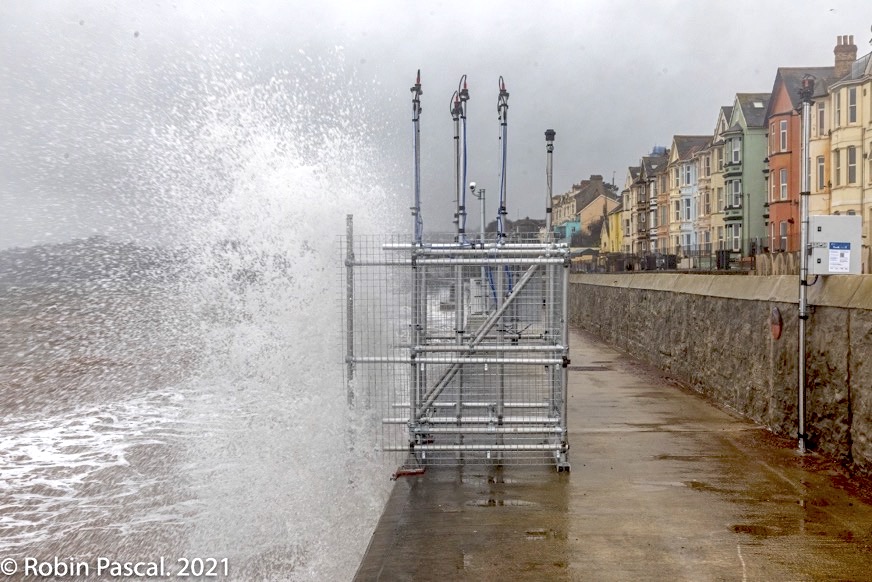The Coastal REsistance: Alerts and Monitoring Technologies (CreamT) project is now is full swing monitoring wave overtopping and beach levels change at Dawlish. While the lockdowns have been challenging with workshops access restricted and material supply chains impacted from the outset of the project, we still made it to the beach to collect out first set of observations before winter 2020/2021 came to an end. Must say, we appreciated the lockdown effect on the motorway traffic as we got to Dawlish in the time google maps predicted. Especially after a lost covid-19 test swab resulted in a rather frantic weekend trying to get a retest in time to ensure we made it to site before the good weather was to be replaced with strong winds that could have prevented work on the edge of the sea wall.


Our monitoring equipment is now successfully installed at Dawlish and has been there since early March. It’s positioned where the sea wall collapsed in 2014 leaving the SW railway line dangling in thin air. The equipment includes an autonomous beach level laser scanner (“B-scan”) and camera, and a newly adapted and manufactured overtopping measurement system “WireWall”. The novel wave overtopping information have been nowcast since 10th March 2021. This is the first time that near-real-time data have been self-publicised direct from a sensor to BODC’s ERDDAP web instance and hence made available automatically: previously data have had to be sent via some bespoke intermediary server. The near-real-time overtopping data are publicly available through the BODC web service (ERDDAP instance https://linkedsystems.uk/erddap/tabledap/index.html?page=1&itemsPerPage=1000), which has been further developed this winter to ingest our novel flood impact data alongside other coastal information and make it available for downstream applications. The data are available every 10 minutes for a 6 hour window centred over high tide. The week the systems were installed we captured some good overtopping spray within minutes of completing work on the sea wall. There was a bit of a panic that we’d not have completed the system set-up in time, but our fab engineers never let us down. All sensors detected some overtopping as the water/spray travelled across the walkway. All was then quiet until 19th March when the seaward two sensors at the crest of the seawall detected some spray between 8:30pm and 11pm. That’s the great thing about WireWall – it works night and day and, unlike video cameras, doesn’t require daylight to detect what’s going on.


A beach and drone survey was carried out just days after the installation was completed so that concurrent beach level information can be included alongside the existing operational wave and water level data that are used as inputs to the system run by the University of Plymouth to issue flood hazard alerts through the SWEEP OWWL model. Their laser continues to monitor the beach level at the toe of the sea wall every low water to check for erosion hazard.
The initial overtopping data has already proved valuable for calibrating the model, since significant overtopping was measured by WireWall during a southerly wind event that was not forecast to pose a hazard at the Dawlish sea wall. Subsequent monitoring data saw the tail end of an overtopping event when the system turned on 3 hours before high water and then the start of another event just before the system turned off 3 hours after high water. This information is critical to understand the combination of conditions that pose a hazard so we can now get to work refining out smart monitoring triggers using establish coastal monitoring feeds available through APIs.
We’ve also formed good relations with Network Rail’s South West Rail Resilience Programme to ensure the data collected are of benefit to ongoing coastal works and community engagement activities. We now have everything crossed that lockdown restrictions will ease as planned so we can get our CoastSnap post installed while our team of digital artists prepare to run some public walking workshops late summer/autumn. If you want to see what happens next then follow us on twitter @WireWall_NOC and @pu_cprg. And no throwing water at the system to confuse us if you’re on site! Plymouth’s camera, which is cleverly triggered by the motion of the first train of the day, will be watching you!!!!
